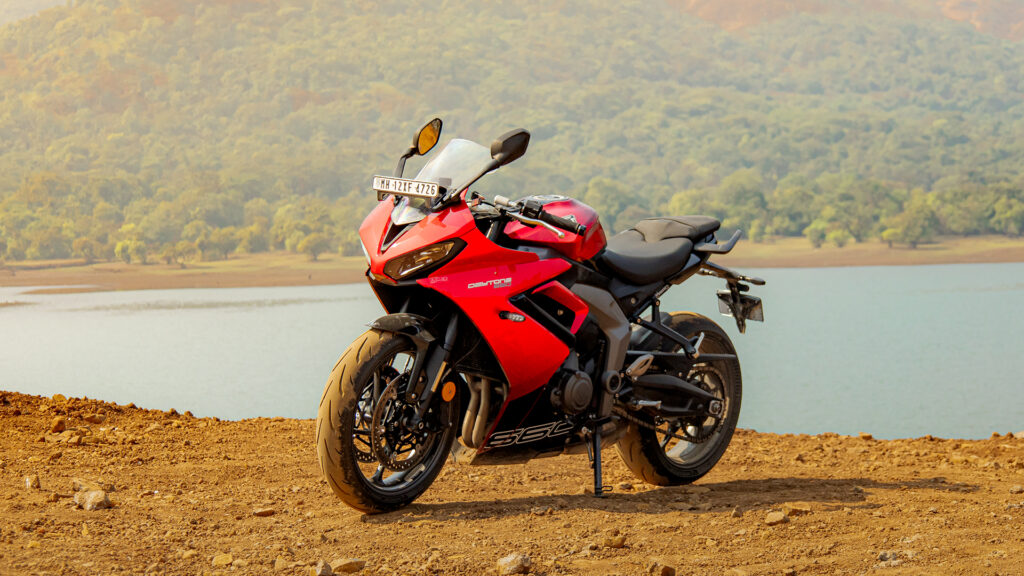The Triumph Daytona has always been the darling of supersport enthusiasts—a razor-sharp, adrenaline-pumping machine with racing pedigree to spare. Since its inception in 1990, the Daytona has evolved significantly, capturing the hearts of purists and casual riders alike. However, with the launch of the Daytona 660, there’s been a lingering bit of discontent in the air: has Triumph actually traded their track-day supremacy for city-friendly manners?

1. A Legendary History Worth Bragging About
Let’s start with a little history lesson. The Daytona made its debut in 1990, powered by a 748cc triple-cylinder engine that instantly became the stuff of legends. Its reputation for handling and speed only grew, culminating in the 2006 Daytona 675—a lightweight, 128-horsepower rocket with handling so precise it could practically read your mind. Then came the 675R in 2011, a limited-edition beauty dripping in high-end components like Öhlins suspension and Brembo brakes.
It was love at first rev for enthusiasts everywhere. The 675R wasn’t just a bike; it was an experience—a spine-tingling symphony of performance and emotion. To this day, it’s a cult classic. But like every legendary saga, things change.

2. Enter the Daytona 660: Evolution or Identity Crisis?
The new Daytona 660 is a bit of a curveball. With a 660cc triple-cylinder engine shared with the Trident 660, this iteration feels more… approachable. But here’s where the purists start to twitch. The Daytona 660 has gained a bit of weight and lost some of its aggression in exchange for a friendlier, more relaxed riding position.
Does this mean the Daytona is having an identity crisis? Maybe. Or maybe it’s just trying to appeal to a wider audience. Think of it as a rebellious teenager who went to college and got a haircut. It’s still cool, but is it still the same?

3. A Day in the Life: Touring with the Daytona 660
Let’s talk real-world usability. On our 200-kilometer test ride, the 660 sipped fuel at just under 20 kilometers per liter. With a 14-liter tank, you’re looking at solid range potential—perfect for those weekend escapades (assuming your core muscles can survive the riding position).
What’s surprising is how tractable the engine is. This bike will happily cruise at 20 km/h in fourth gear without a single complaint. That’s torque management at its finest. Try that on the old Daytona 675, and it’d probably laugh in your face.

4. City Life: The Daytona 660 Finds Its Groove
Here’s where things get interesting. Unlike its predecessor, which was happiest shredding apexes, the 660 actually behaves in city traffic. Triumph stretched the first and second gears compared to the Trident, making the bike less frantic at low speeds. The clutch is delightfully light, and with a ₹50k optional quickshifter, gear changes become almost effortless—perfect for stop-and-go chaos.
The rear suspension even comes with preload adjustability, which is a godsend for navigating pothole-riddled roads. Sure, you’ll still have to contend with sports bike quirks like ground clearance, engine heat, and a committed riding position, but as far as urban compatibility goes, the Daytona 660 earns its stripes.

5. Final Verdict: Is the Daytona Still Legendary?
So, has the Daytona 660 sacrificed its charm? That depends on how you see it. For purists who live for the hair-raising antics of the 675R, the 660 might feel a little too tame, a little too sensible. But for the rest of us—mere mortals who occasionally need to commute or ride in traffic—it’s a revelation.
The Daytona 660 bridges the gap between agile performance and everyday usability. It’s the Daytona you can ride to the office without pulling a muscle or scaring your coworkers in the parking lot. Sure, it’s no longer the rebel of the family, but its still the most athletic one, right?!








